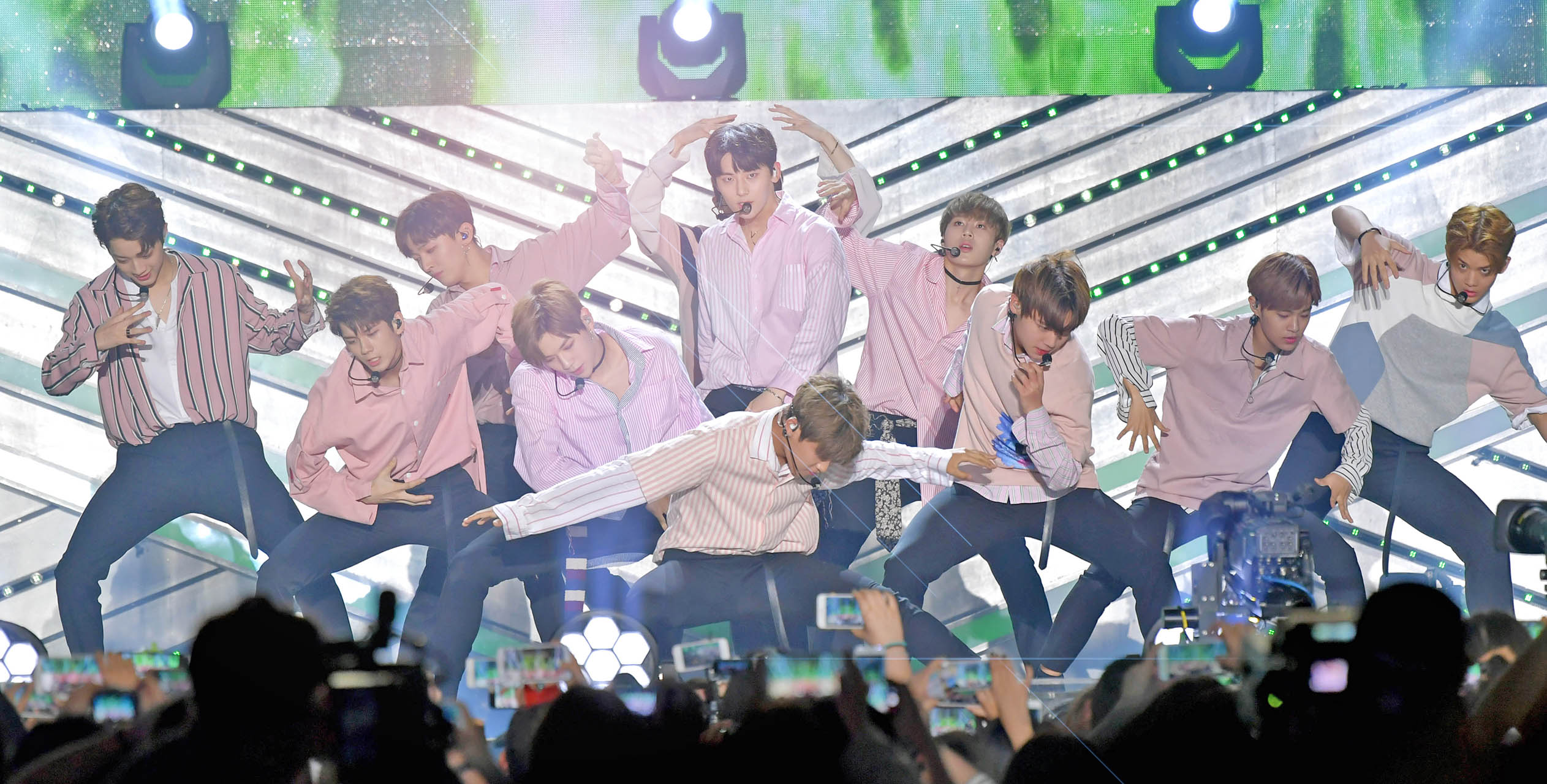
In a packed stadium at a K-pop concert, it’s hard for fans sitting far away from the stage to feel intimacy with their idols, the very reason they go to live concerts in the first place.
Soon frustration could strike.
No worries. Digital technology will sure make fans feel that they are there with their idols.
K-pop expert Suk-young Kim’s book “K-pop Live: Fans, Idols and Multimedia Performance,” observes K-pop has been successfully transforming from digital music to live performances, owing to digital technology.
Suk-young Kim’s book “K-pop Live: Fans, Idols and Multimedia Performance”
Based on her own experience at the K-pop boy band EXO’s live concerts in the Los Angeles Memorial Sports Arena in February, 2016, Kim, a professor of critical studies and director of the Center for Performance Studies at the University of California, Los Angeles, explained how digital technology can pave the way for the “illusion of intimacy” in live performances.
“Magnified faces of the stars started to appear on the screen as if to compensate for the spectator limitations of audience members seated far away from the stage,” she wrote.
“One by one, each member of the band directed his amorous gaze at the camera, looking directly into the eyes of the viewers, whose point of view had become entirely conflated with that of the person behind the camera. Each band member reached out with his hand to hold the hand of the cinematographer-cum-audience, transforming a 2-D video screen into an affective interface where thousands of anonymous concert attendees suddenly became positioned as intimate subjects who could touch and interact with these stars.”
Several K-pop bands have multicity tours to reach out to their global fans.
Heralded by BIGBANG’s successful concert tours in the United States in 2015, which marked one of the top-10 tours there, several K-pop groups, including BTS, have gone on or announced their world tour schedules.
Kim said some of their live concerts were successful because of the effective use of multimedia technology.
“I see K-pop as one of those powerful transmitters of complex sensory entanglement that produces the semblance and verisimilitude of live interaction and the pursuit of liveness in K-pop performance across media as a way to realize an impression of such synesthetic ideals,” Kim wrote.
K-pop is a beneficiary of the drastic shift in global music consumption from live concerts to digital music, a change that entailed illegal downloads and online piracy.
Until 2010, the popularity of K-pop had largely been a cultural phenomenon only in Asia.
K-pop singers were obscure among music fans in Europe, North America and Latin America.
It was YouTube that helped some Korean singers successfully reach out to global fans. Psy’s “Gangnam Style” music video is considered a turning point for K-pop’s global expansion. The funny music video with the singer’s signature horse-riding dance went global all across the world. Since then, some Korean singers, such as BTS, have garnered phenomenal success.
Kim observes the meteoric rise of K-pop has been associated with multimedia-based music consumption.
In her book, Kim says as a cultural phenomenon, K-pop started to gain momentum around the turn of the millennium when physical album sales were rapidly collapsing while the online music market was still evolving and maturing.
“K-pop’s global expansion came, not via live world tours, but via music videos, recorded TV music chart shows and other media promotions that became widely popular on YouTube and solidified K-pop’s reputation as a form of entertainment…,” the book states.
Kim argues the digital-based music is undergoing a major shift and K-pop artists are striving to reach out to their global fans in multicity live concert tours.
Source: THE KOREA TIMES
